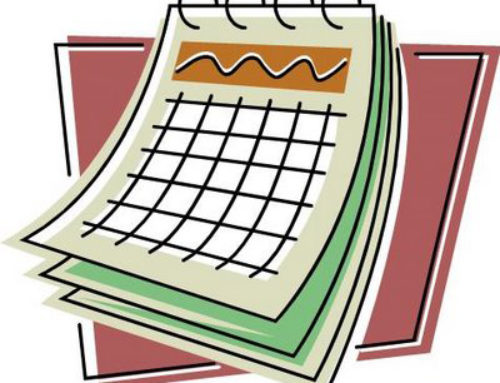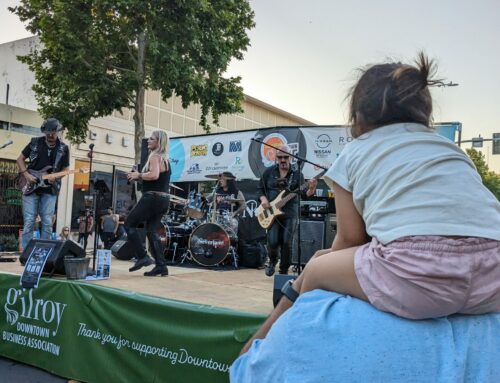La Ofrenda Festival to be held Oct. 28 in downtown
![]()
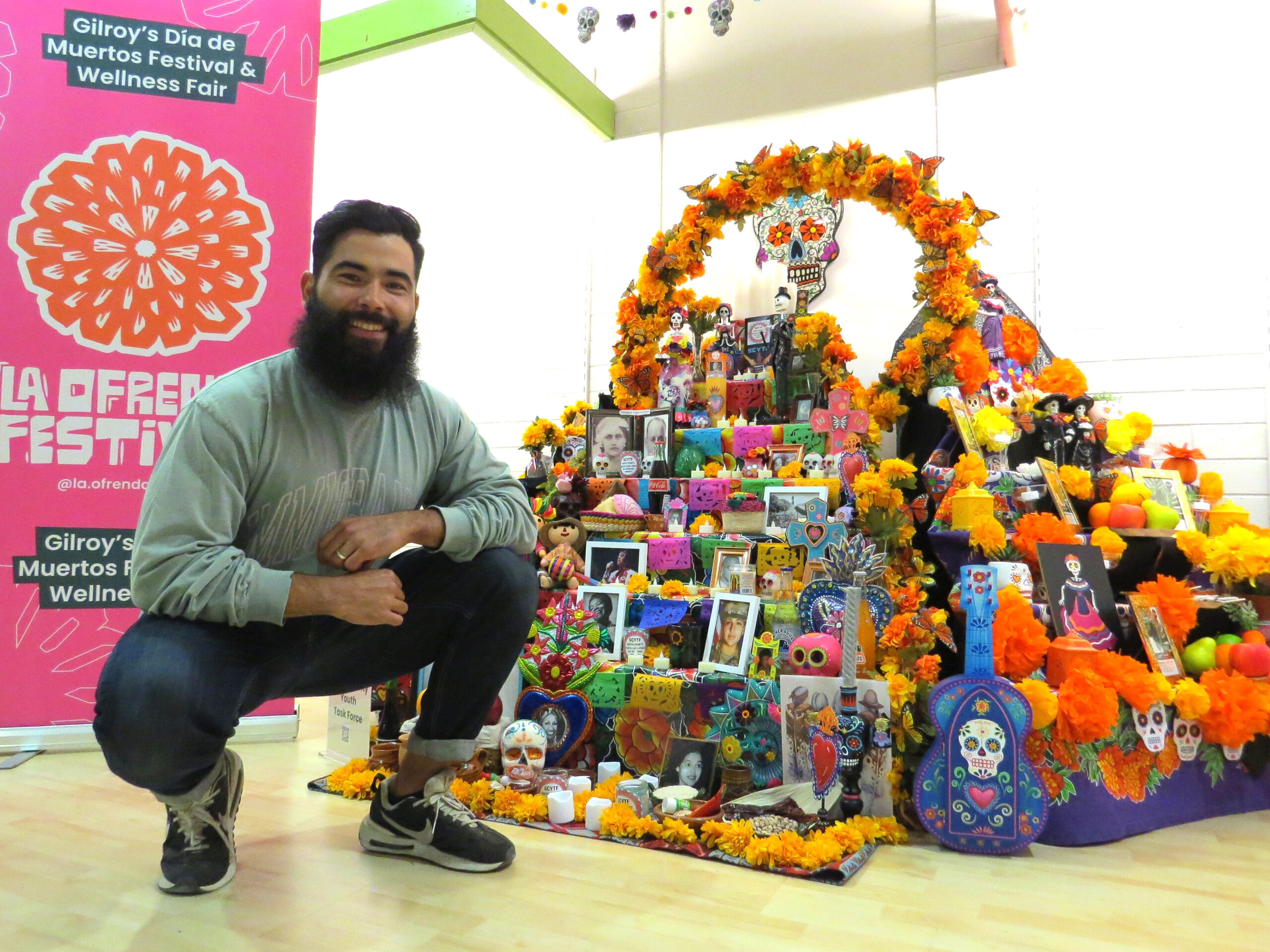
Ruben “Mr. Fúchila” Dario Villa next to one of the about a dozen different “la ofrenda” altars the Gilroy Center for the Arts. Photo by Marty Cheek
By Gio Tlaxcalteco Lopez
Día de los Muertos is held dear to the hearts of many in the South Valley community. Among them is Ruben “Mr. Fúchila” Dario Villa. He curated at the Gilroy Center for the Arts an exhibit of about a dozen “la ofrenda” altars honoring those who have passed.
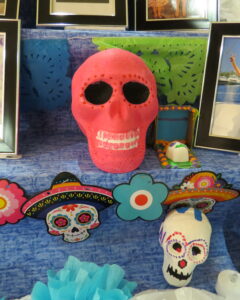
Photo by Marty Cheek
Villa organized the inaugural La Ofrenda Festival that took place in downtown Gilroy as part of a Día de los Muertos community celebration weaving together the tapestry of arts, culture, and well-being. The street festival was held Saturday Oct. 28 on Sixth Street.
“Hosting ofrendas at the Gilroy Center for the Arts is actually a long standing local tradition that has received a new surge of energy and awareness this year,” Villa said. “I’m proud to play a small role in that resurgence and hope that our community will continue to live out this legacy for years to come.”
Día de los Muertos — or The Day of the Dead — is a time for reminiscing of deceased loved ones such as a grandparent, siblings, or friends and the impact they had on the lives of those who surrounded them, along with the legacy they left behind. As a community and as a society, the past plays a crucial role in shaping how individuals act, interact, build upon each other and aid each other. More often than not, this respect is owed to ancestors.
“Día de los Muertos is one of those holidays that is intimately personal and simultaneously rooted in community — connecting with past generations and a collective international community very much alive and intent on holding on to our identity,” Villa said. “It embraces the yin and yang of life, the beauty of life and reminder of our lack of control that death provides.”
In the Gilroy Center for the Arts, “each altar is dedicated to an aspect of life, death, community, and causes dear to each organizations’ vision and mission. Each ofrenda has become a beautiful flower in a bouquet of marigolds, guiding its community in solidarity towards a future rooted in history,” he commented regarding the significance of the altars in the Gilroy community.
In many communities, these altars are a significant part of the history and culture. With the large Latino population found in the South Valley region, this tradition has become increasingly important. It has experienced a recent resurgence, one which Villa hopes to see continue growing and expanding in Gilroy.
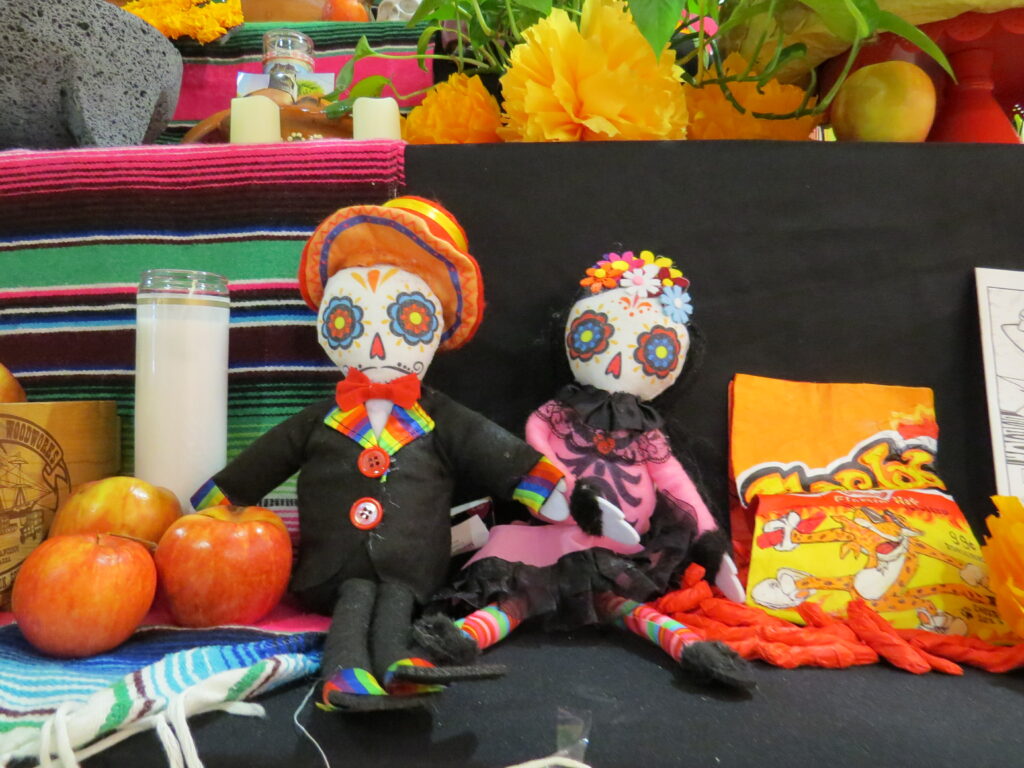
Photo by Marty Cheek
Día de los Muertos is “a celebration to remember, honor, and show respect for those loved ones, whether family or friends, who have passed,” said Kathy Chavez Napoli, an organizer for the Morgan Hill Historical Society’s Día de los Muertos Community Altars.
The free event was held at Morgan Hill’s Villa Mira Monte historical park Saturday, Oct. 28, and Sunday, Oct. 29. Participants could contribute up to three expendable offerings for the outdoor altars at the family-friendly event. There were also activities to further discover the history and traditions of Día de los Muertos.
The involvement in the Morgan Hill community can also be seen at Ann Sobrato High School. The Latino Student Union set up their altar for the school community to share and participate in. The club’s publicity chair, junior Carolina Ramirez, believes it’s an extremely important tradition to share.
“For me, this holiday, and this time of year is a time to spend with family and friends. To honor the lives of loved ones who have passed,” she said. “Really, this holiday is about love, honor, gratitude, and family. In Latino culture, family is deeply rooted in everything we do. Our family means everything to us, and family doesn’t just mean blood-related relatives, which I find beautiful.”
Although Día de los Muertos may have Latino roots, it warmly welcomes everyone in the community. Anyone in various walks of life is welcomed to participate in the sentiment of this tradition.
Family is one of the key components of the culture and tradition, with the community considered one big family. A tradition such as Day of the Dead reiterates the sentiment, with its celebration being a keystone toward building a stronger, more united community.
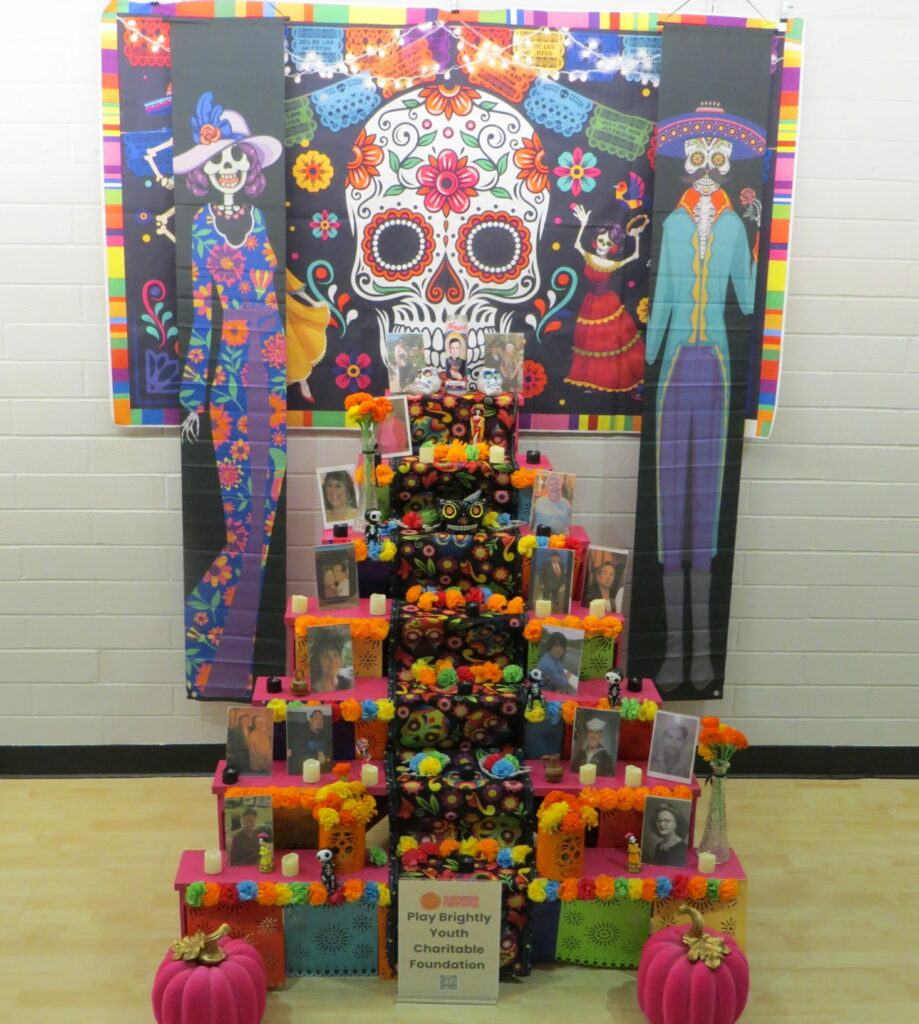
One of the Día de los Muertos altars on display at the Gilroy Center for the Arts. The annual celebration originated in Aztec and Nahua people’s cultural traditions. Photo by Marty Cheek
At Sobrato, Ramirez believes, “It’s important to share Día De Los Muertos and the altar with our student body and staff because it is truly such a beautiful celebration with a universal meaning … To share such beliefs with the student body at Sobrato could create a stronger community.”
The altar the students constructed has found its home in Sobrato’s library. In this communal area, many students may gather to build upon each other.
The foundation of Día de los Muertos is building and reiterating relationships with ancestors and loved ones as well as the community.
At Sobrato, this is done “by letting students and staff use sticky notes to write down the name of their loved one, and possibly a little personal message,” Ramirez said.
Día de los Muertos originated in Aztec and Nahua (indigenous Mexican) people’s traditions of honoring the dead. It evolved over time to be celebrated generally through the creation of an altar to highlight aspects of life, death, light, and sustenance, for instance, with unique, individual additions for certain family members.
Napoli, Villa and Ramirez are not sole representatives in the South Valley of the tradition of Día de los Muertos. The celebrations, emotional ties and significance of the day lay in the hands of the community. It’s a time to remember where individuals came from, what is learned, and where the community wants to go. They started the story, they are honored and remembered, and the community continues the story.
Gio Tlaxcalteco Lopez is a senior at Sobrato High School. He wrote this story with mentorship by Morgan Hill Life publisher Marty Cheek.



